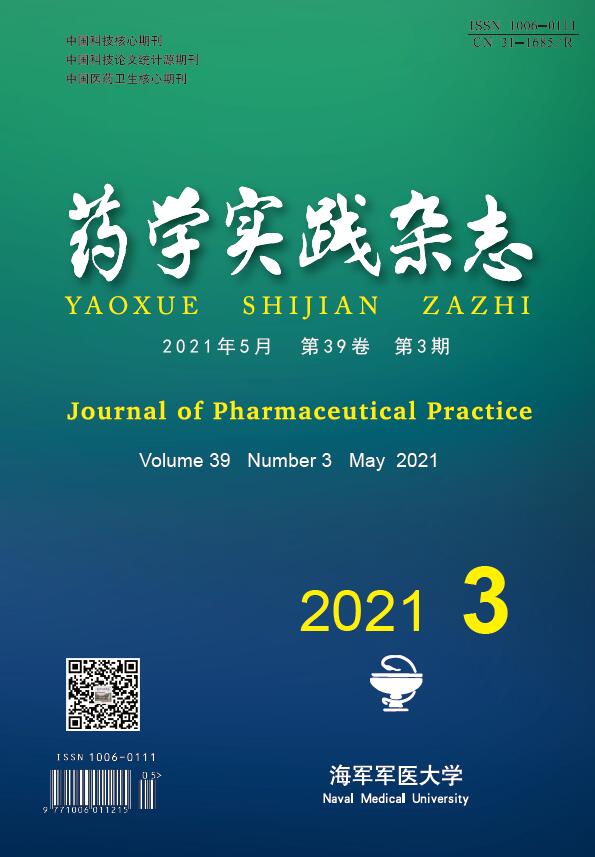-
目前,脑卒中、冠心病等心血管病(cardiovascular disease, CVD)是造成我国居民死亡和疾病负担的首要病因[1]。有研究预测,2010−2030年间我国成年人血清胆固醇水平的升高将会造成心血管病事件增加920万例,预示未来中国成年人血脂异常及相关疾病负担将继续加重[2]。以低密度脂蛋白胆固醇(LDL-C)或总胆固醇(TC)升高为特点的血脂异常是缺血性脑卒中的重要危险因素,血清胆固醇水平升高与缺血性卒中的发生密切相关[3]。降低LDL-C水平,可显著减少其发病及死亡危险[4]。阿托伐他汀(atrovastatin)为亲水性羟甲基戊二酰辅酶A还原酶(HMG-CoA)抑制剂,临床用于降脂和调脂治疗,但其疗效和不良反应具有明显的个体差异性,考虑可能与患者的基因多态性有关。
以往他汀药物基因多态性研究多以高血脂症患者为研究对象,而对心血管疾病极高危和高危人群研究较少,且用药后观察时间较短,一般不超过2个月。笔者研究缺血性脑卒中伴血脂异常患者的SLCO1B1、APOE基因多态性及阿托伐他汀用药3个月后疗效、不良反应的相关性,从遗传变异角度评价药物疗效的临床差异,以期为阿托伐他汀的临床长期用药提供参考。
HTML
-
选取上海市浦东新区公利医院2018年4月至2018年12月收治的缺血性脑卒中伴血脂异常患者。纳入标准:①符合2016年修订的《中国血脂异常防治指南》血脂异常诊断标准;②入院前3个月内服用过他汀类及其他调脂类(如贝特类、烟酸类、依折麦布等)。排除标准:①肝、肾功能不全者;②严重感染、恶性肿瘤、甲状腺和血液系统等疾病患者;③患者未进行规律服药及复查,临床记录不完整的患者。入选患者共210例,男132例(62.86%),女78例(37.14%),平均年龄(67.29±12.49)岁。
-
入选患者首次服药前空腹抽取外周静脉血2 ml置于eDTA抗凝管中,采用磁珠法提取全血DNA,提取好的基因组DNA在−20 ℃下储存;采用PCR技术扩增特定基因片段:PCR系统包括:2 μl基因组DNA,25 mmol/L脱氧核糖核苷三磷酸(dNTPs),1 μmol/L引物,25 mmol/L镁离子(Mg2+),5 U/μl PCR DNA聚合酶,总反应体积为5 μl。PCR反应参数为循环参数:95 ℃ 2 min,(95 ℃ 30 s,60 ℃ 30 s,72 ℃ 60 s)45个循环,72 ℃ 5 min,4 ℃保温。7 μl的纯化PCR产物进行单碱基延伸反应,反应参数为:94 ℃ 30 s,[94 ℃ 5 s,(52 ℃ 5 s,80 ℃ 5 s)该步骤5个循环]40个循环,72 ℃ 3 min,4 ℃ 保温。运用飞行时间质谱法进行包括SLCO1B1 521T>C(rs4149056)与APOE 526C>T(rs429358)、388T>C(rs7412)的基因分型检测。
-
入选患者首次服用阿托伐他汀20 mg/d前及服药3个月后,空腹采集全血标本2 ml,全自动生化仪测定疗效指标血清TC、TG、HDL-C和LDL-C,以及安全性指标总胆红素(TBil)、谷丙转氨酶(ALT)、碱性磷酸酶(ALP)、肌酸激酶(CK)水平。收集患者服药期间患者肌痛的发生情况,包括肌钝痛、酸痛,四肢及远端压痛,运动时或之后即刻痛性痉挛等不良反应。其中,他汀类相关肌病(SAM)诊断标准为①肌痛:肌组织疼痛或无力,但CK水平无明显升高。②肌炎:肌组织有疼痛症状,CK水平轻-中度升高但小于正常值上限5倍。③横纹肌溶解:肌组织有明显疼痛症状,CK水平超过正常上限5倍及以上、褐色尿及肌红蛋白尿合并急性肾功能衰竭[5]。追踪纳入的210例患者长期服用阿托伐他汀期间不良反应的主诉情况,并排除重体力劳动和长期剧烈运动对患者的影响。
-
采用SPSS 22.0统计软件对观察指标的结果进行分析,连续变量以(
$ \bar x$ ±s)表示,通过χ2检验验证SLCO1B1和APOE各基因型分布是否符合Hardy-Weinberg平衡,P>0.05代表该基因型已经在本群体中达到遗传平衡。计量资料符合正态分布采用($ \bar x$ ±s)表示,组间均数比较采用方差分析,以P<0.05为差异有统计学意义。
1.1. 研究对象
1.2. 实验方法
1.2.1. SLCO1B1和APOE基因分型的检测
1.2.2. 疗效及安全性指标检测
1.2.3. 统计学分析
-
采用直接计数法统计基因型,计算各位点等位基因频率。SLCO1B1 521 T>C在缺血性脑卒中伴血脂异常患者中,等位基因型频率为11.43%,SLCO1B1 521T>C基因型分布符合Hardy-Weinberg平衡定律(χ2=0.73,P=0.39),P>0.05表明本研究人群具有群体代表性。APOE基因型分布符合Hardy-Weinberg平衡定律(χ2=0.61,P=0.43),P>0.05表明本研究人群具有群体代表性,各基因型分布见表1。
基因型 野生型
纯合型(TT)突变
杂合型(TC)突变
纯合型(CC)等位基因
(频率/%)T C SLCO1B1 521 T>C 166
(79.05)40
(19.05)4
(1.90)372
(88.57)48
(11.43)APOE 526 C>T 169
(80.47)38
(18.10)3
(1.43)376
(89.52)44
(10.48)388 T>C 5
(2.38)28
(13.33)177
(84.29)38
(9.05)382
(90.95) -
APOE基因表型E3组(e3/e3、e2/e4)最高,占67.62%;E2组(e2/e2、e2/e3)占14.28%;E4组(e3/e4、e4/e4)占18.10%,详见表2。
基因分型 等位基因 数量(例) 合计(例) 频率(%) E2 e2/e2(TT/TT) 5 30 14.28 e2/e3(TT/CT) 25 E3 e3/e3(TT/CC) 139 142 67.62 e2/e4(TC/TC) 3 E4 e3/e4(CT/CC) 35 38 18.10 e4/e4(CC/CC) 3 合计 210 210 100 -
用药后APOE不同基因型患者TG、TC、HDL-C、LDL-C变化率均有显著性差异(P<0.01),见表3。经组间比较,TC值降低幅度和HDL-C升高幅度E3优于E2、E4(P<0.01),TG和LDL-C值降低幅度E2、E3优于E4(P<0.01)。
APOE分型 血脂水平变化率(%) TC TG HDL−C LDL−C E2(n=30) −5.14±43.07 −10.33±20.52 −3.66±17.97 −15.93±24.38 E3(n=142) −22.06±10.95 −10.54±6.08 10.75±7.31 −17.85±6.39 E4(n=38) −7.30±13.12 5.86±24.18 −0.38±15.50 −5.85±16.27 F 15.3615 22.0550 29.8886 13.6252 P <0.01 <0.01 <0.01 <0.01 -
两组患者TBil、ALT、ALP的变化率差异无统计学意义(P>0.05),(TC+CC)组较TT组能显著升高CK,有统计学意义(P<0.01),见表4。
组别 安全性指标变化(%) TBil ALT ALP CK TT(n=166) 30.06±25.83 36.27±50.22 23.68±42.32 8.39±32.28 TC+CC(n=44) 22.62±31.01 20.36±45.22 35.49±54.63 28.62±29.66 P >0.05 >0.05 >0.05 <0.05 -
纳入的210例患者中,共有10例患者表示出现不同程度的肌痛症状,其中,8例患者为SLCO1B1突变型(CT+CC),2例为SLCO1B1野生型(TT型),两组肌痛发生率有显著性差异(P<0.01),见表5。
基因位点 基因型 无肌痛 肌痛 SLCO1B1(n=210) TT(n=166) 164 2 TC+CC(n=44) 36 8 合计 200 10
2.1. 基因型多态性频率的Hardy-Weinberg H-W遗传平衡检验
2.2. APOE基因多态性及等位基因频率分布
2.3. APOE基因与他汀类药物疗效的相关性分析
2.4. 患者SLCO1B1基因多态性对阿托伐他汀安全性影响
2.5. 服药后安全性
-
阿托伐他汀,3-羟基-3-甲基-戊二酰(HMG)-CoA还原酶抑制剂,不仅被广泛用于治疗高胆固醇血症,在动脉粥样硬化性心血管疾病(ASCVD)一级和二级预防中亦能显著降低心血管事件风险。但在临床实践中,阿托伐他汀的降脂效果,以及药物不良反应个体差异较大,这可能与基因遗传学方面有关,而SLCO1B1和APOE则是2个重要基因。
有机阴离子转运体OATP1B1是SLCO1B1基因编码蛋白,主要存在于人体肝脏的基底膜外侧,负责将多种内源性和外源性物质由血液转运至肝细胞内。阿托伐他汀需经OATP1B1主动摄取进入肝细胞,从而发挥降血脂的作用。目前发现SLCO1B1具有很高的遗传变异性,尤其是521T>C位点突变使OATP1B1转运功能下降,降低了肝细胞内药物浓度, 而升高体循环中的药物浓度,此时可能导致肌肉损伤等毒副作用。BAI等分析了758例服用阿托伐他汀后出现SAM的患者,发现SLCO1B1521 T>C突变与高他汀类相关肌病(SAM)风险显著相关(R=1.741,95%CI:1.180~2.568,P=0.005)[6]。王婧等[7]研究认为,SLCO1B1基因388A>G对阿托伐他汀降脂效果无显著影响。本研究发现,SLCO1B1基因521 T>C TC/CC组有18.18%患者出现肌痛症状,与TT组相比差异有统计学意义,这可能与患者体内阿托伐他汀药物浓度升高有关。因此,SLCO1B1基因521 T>C增大了患者发生肌病的风险,对于有SLCO1B1521 T>C等位基因突变的患者,建议临床使用时降低他汀类药物剂量或更换他汀类品种。
APOE是一种蛋白质,在脂质体内平衡中起着关键作用,因为它调节血液和大脑中的胆固醇,甘油三酸酯和磷脂代谢。ApoE蛋白的产生受APOE基因的控制,针对该基因可识别3个不同的等位基因:ε2,ε3和ε4。APOE位于乳糜微粒、高密度脂蛋白(HDL)、中密度脂蛋白(IDL)和极低密度脂蛋白(VLDL)的表面。APOE基因调节该蛋白的表达,并具有3个不同的等位基因:ε2,ε3和ε4[8]。张宇等[9]报道,经阿托伐他汀治疗后,APOE基因型e3/e3患者的血脂水平及APOE基因表达的下调程度均高于e3/e4型患者。Kirac等[10]研究发现,经阿托伐他汀治疗后,对APOE基因e2携带者的降脂作用最强,e4突变型患者主要见于无效组中。本研究中,患者经阿托伐他汀治疗后,APOE E4等位基因携带者对阿托伐他汀降脂治疗不敏感,故此类型患者可采用非他汀类调脂药物治疗。
综上所述,本研究发现APOE基因型影响阿托伐他汀降脂效果,而SLCO1B1521 T>C基因型与增加肌病的风险相关。药师在开展药物治疗管理时,可通过相应的基因多态性检测评估患者疗效和出现肌病的风险,合理选择降脂药物品种和剂量,提高临床用药的有效性和安全性,实现个体化用药。因本研究病例数有限,后续还需多中心、大样本、前瞻性研究等临床试验进一步验证。









 DownLoad:
DownLoad: